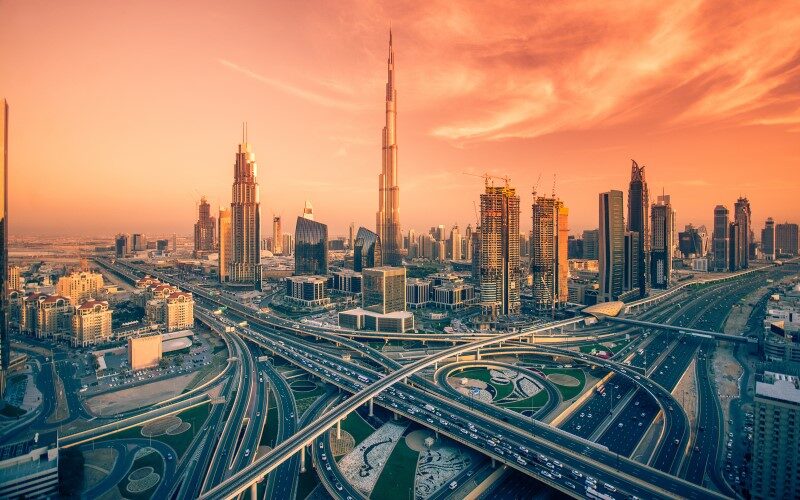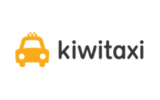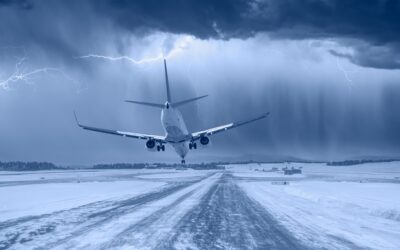Dubai
Citytrips Posted by gaytravel on Wed, Mar 21st, 2018 @ 5:50:49 PM 529 0

Dubai is the largest and most populous city in the United Arab Emirates. It is located on the southeast coast of the Persian Gulf and is the capital of the Emirate of Dubai, one of the seven emirates that make up the country. It emerged as a global city and business hub of the Middle East. By the 1960s, Dubai’s economy was based on revenues from trade. Oil was only discovered in 1966 with a flow of revenue from 1969. Dubai’s oil revenue helped accelerate the early development of the city, but its reserves are limited and production levels are low: today, less than 5% of the emirate’s revenue comes from oil. The Emirate’s Western-style model of business drives its economy with the main revenues now coming from tourism, aviation, real estate, and financial services. Dubai was recently named the best destination for Muslim travellers by Salam Standard. Dubai has recently attracted world attention through many innovative large construction projects and sports events. The city has become iconic for its skyscrapers and high-rise buildings, in particular, the world’s tallest building, the Burj Khalifa. Dubai has been criticised for human rights violations concerning the city’s largely South Asian and Filipino workforce. Dubai’s property market experienced a major deterioration in 2008–09 following the financial crisis of 2007–08, but the emirate’s economy has made a return to growth, with a projected 2015 budget surplus. As of 2012, Dubai was the 22nd most expensive city in the world and the most expensive city in the Middle East. In 2014, Dubai’s hotel rooms were rated as the second most expensive in the world, after Geneva. In 2013, U.S. global consulting firm Mercer rated Dubai the best place to live in the Middle East.
__________________________
Pre-oil Dubai
Dubai’s geographical proximity to Iran made it an important trade location. The town of Dubai was an important port of call for foreign tradesmen, chiefly those from Iran, many of whom eventually settled in the town. By the beginning of the 20th century, it was an important port.[34]
Dubai was known for its pearl exports until the 1930s; the pearl trade was damaged irreparably by the Great Depression in the 1930s and the innovation of cultured pearls. With the collapse of the pearling industry, Dubai fell into a deep depression and many residents starved or migrated to other parts of the Persian Gulf.
In the early days since its inception, Dubai was constantly at odds with Abu Dhabi. In 1947, a border dispute between Dubai and Abu Dhabi on the northern sector of their mutual border escalated into war.[35] Arbitration by the British and the creation of a buffer frontier running south eastwards from the coast at Ras Hasian resulted in a temporary cessation of hostilities.[36]
Despite a lack of oil, Dubai’s ruler from 1958, Sheikh Rashid bin Saeed Al Maktoum, used revenue from trading activities to build infrastructure. Private companies were established to build and operate infrastructure, including electricity, telephone services and both the ports and airport operators.[37] An airport of sorts (a runway built on salt flats) was established in Dubai in the 1950s and, in 1959, the emirate’s first hotel, the Airlines Hotel, was constructed. This was followed by the Ambassador and Carlton Hotels in 1968.[38]
The Al Ras district in Deira, Dubai in the 1960s
On 7 April 1961, the Dubai-based MV Dara, a five thousand ton British flagged vessel that plied the route between Basra (Iraq), Kuwait and Bombay (India), was caught in unusually high winds off Dubai. Early the next morning in heavy seas off Umm al-Quwain, an explosion tore out the second class cabins and started fires. The captain gave the order to abandon ship but two lifeboats capsized and a second explosion occurred. A flotilla of small boats from Dubai, Sharjah, Ajman and Umm al-Quwain picked up survivors but in all 238 lives were lost in the disaster.[39]
In 1962 the British Political Agent noted that “Many new houses and blocks of offices and flats are being built… the Ruler is determined, against advice [from the British] to press on with the construction of a jet airport… More and more European and Arab firms are opening up and the future looks bright.”[38]
In 1962, with expenditure on infrastructure projects already approaching levels some thought imprudent, Sheikh Rashid approached his brother in law, the Ruler of Qatar, for a loan to build the first bridge crossing Dubai’s creek. This crossing was finished in May 1963 and was paid for by a toll levied on the crossing from the Dubai side of the creek to the Deira side.[37]
BOAC was originally reluctant to start regular flights between Bombay and Dubai, fearing a lack of demand for seats. However, by the time the asphalt runway of Dubai Airport was constructed in 1965, opening Dubai to both regional and long haul traffic, a number of foreign airlines were competing for landing rights.[37] In 1970 a new airport terminal building was constructed which included Dubai’s first duty-free shops.[40]
Oil era
View of Downtown Dubai from Burj Khalifa
After years of exploration following large finds in neighbouring Abu Dhabi, oil was eventually discovered in territorial waters off Dubai in 1966, albeit in far smaller quantities. The first field was named ‘Fateh’ or ‘good fortune’. This led the emirate to grant concessions to international oil companies, thus leading to a massive influx of foreign workers, mainly Asians and Middle easterners. Between 1968 and 1975 the city’s population grew by over 300%.[41]
As part of the infrastructure for pumping and transporting oil from the Fateh field, located offshore of the Jebel Ali area of Dubai, a number of 50,000 gallon storage tanks were built, known locally as ‘Kazzans’,[42] by welding them together on the beach and then digging them out and floating them to drop onto the seabed at the Fateh field. These were constructed by the Chicago Bridge and Iron Company, which gave the beach its local name (Chicago Beach) until the Chicago Beach Hotel was demolished and replaced by the Jumeirah Beach Hotel in the late 1990s.
Dubai had already embarked on a period of infrastructural development and expansion. Oil revenue, flowing from 1969 onwards supported a period of growth with Sheikh Rashid embarking on a policy of building infrastructure and a diversified trading economy before the emirate’s limited reserves were depleted. Oil accounted for 24% of GDP in 1990, but had reduced to 7% of GDP by 2004.[9]
Critically, one of the first major projects Sheikh Rashid embarked upon when oil revenue started to flow was the construction of Port Rashid, a deep water free port constructed by British company Halcrow. Originally intended to be a four-berth port, it was extended to sixteen berths as construction was ongoing. The project was an outstanding success, with shipping queuing to access the new facilities. The port was inaugurated on 5 October 1972, although its berths were each pressed into use as soon as they had been built. Port Rashid was to be further expanded in 1975 to add a further 35 berths before the larger port of Jebel Ali was constructed.[9]
Port Rashid was the first of a swath of projects designed to create a modern trading infrastructure, including roads, bridges, schools and hospitals.[43]
Dubai beach

Dubai beach with Burj Al Arab hotel on the background
https://en.wikipedia.org/wiki/Jumeirah_Beach_Residence
Ski Dubai
Dubai has the largest indoor ski piste.
 By Keirn OConnor from New York City, United States (Mall of Emirates Skiing) [CC BY-SA 2.0], via Wikimedia Commons
By Keirn OConnor from New York City, United States (Mall of Emirates Skiing) [CC BY-SA 2.0], via Wikimedia CommonsMost remarquable hotels
Burj Khalifa
http://hotels.travelengine.eu/Hotel/Burj_Khalifa.htm
http://hotels.travelengine.eu/Hotel/Armani_Hotel_Dubai.htm
http://hotels.travelengine.eu/Hotel/Dream_Inn_Dubai_Apartments_48_Burj_Gate_Burj_Khalifa_Fountain_View.htm
Burj Al Arab Jumeirah
http://hotels.travelengine.eu/Hotel/Burj_Al_Arab_Jumeirah.htm
Atlantis The Palm 5stars
http://hotels.travelengine.eu/Hotel/Atlantis_The_Palm.htm
Jumeirah Beach Hotel 5stars
http://hotels.travelengine.eu/Hotel/Jumeirah_Beach_Hotel.htm
Public transport
Cheap flights
What is NEXXTRIP?
NEXXTRIP is a travel site with flight search engine based upon AVIASALES. Except for flights it also offers hotels and holidays packs from different travel agents. NEXXTRIP also has gay travel and a business directory.
NEXXTRIP - trusted by 100 000 + regular travelers
MDB free download



























